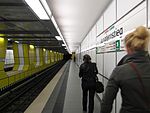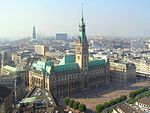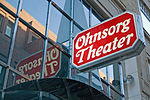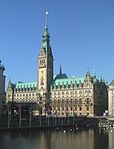Alsterhaus

The Alsterhaus is a five-story department store at Jungfernstieg 16–20 in Hamburg that opened in 1912. From 1994 to 2014 it was a branch of the department store group Karstadt (as part of Karstadt Premium GmbH), after which it was made a part of KaDeWe Group GmbH together with Oberpollinger in Munich and the KaDeWe in Berlin. The department store has a sales area of around 24,000 m2 (260,000 sq ft) and specializes in items such as perfume, accessories, clothing and delicatessen. On the fourth floor there is a Le-Buffet restaurant with a view of the Binnenalster. It is open Monday to Saturday from 10 A.M. to 8 P.M. The Alsterhaus also has its own parking garage, which can be reached via Poststraße and Bei der Stadtwassermühle street.
Excerpt from the Wikipedia article Alsterhaus (License: CC BY-SA 3.0, Authors, Images).Alsterhaus
Jungfernstieg, Hamburg Neustadt
Geographical coordinates (GPS) Address External links Nearby Places Show on map
Geographical coordinates (GPS)
| Latitude | Longitude |
|---|---|
| N 53.5531 ° | E 9.9918 ° |
Address
Alsterhaus
Jungfernstieg 16-20
20354 Hamburg, Neustadt
Germany
Open on Google Maps











